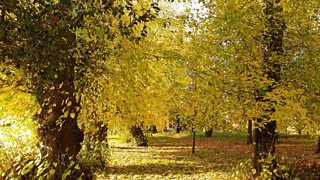How trees are talking to you and how to listen to them
Thomas Hardy wrote that people could identify a tree by its susurration - the sound of leaves in the wind.
In Radio 4's The Susurrations of Trees, producer Julian May and writer Bob Gilbert, author of 'Ghost Trees' share their fascination of the rustles of leaves in the breeze, and capture the distinctive susurrations of several species: quivering poplars, aspens that sound like rain, rattling London planes, whispering elms, the hiss of the ash, whooshing pines and the strangely silent yew.
Here, Bob Gilbert shares his thoughts about the Susurrations of Trees.

I have always felt that our expressions of concern over the state of the natural world, necessary as they are, should be accompanied by something else; by a note of celebration, in fact. By which I mean an appreciation of all that we have around us, and a deeper enjoyment of it, wherever we happen to be. And that enjoyment, it seems to me, should make use of all our senses.
When we learn to recognise trees, if we learn at all, we normally start with visual clues; the shape of their leaves followed, perhaps, by the texture of their bark or the appearance of their winter silhouettes.
In The Susurrations of Trees, we explored not only the physical characteristics of trees, but how they can be identified by the sounds they make.
How do we react to them? How can they be described? And can we actually distinguish different species of trees by the sounds of the wind in their leaves and branches?
Trees have individual personalities and feel pain
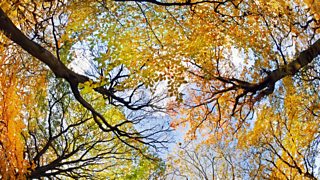
The underground social network of communication between trees.
Thomas Hardy - ‘Under the Greenwood Tree’
Thomas Hardy, who knew our woodland more intimately than any other British novelist, certainly thought this possible, and wrote about it in the opening paragraph of ‘Under the Greenwood Tree’;
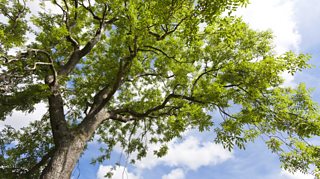
To dwellers in a wood almost every species of tree has its voice as well as its feature.
At the passing of the breeze the fir-trees sob and moan no less distinctly than they rock; the holly whistles as it battles with itself; the ash hisses amid its quiverings; the beech rustles while its flat boughs rise and fall.
And winter, which modifies the note of such trees as shed their leaves, does not destroy its individuality.
Listening to trees
My personal journey into tree song began with the plane tree in my own back yard.
Susurration is a word for tree sounds, and actually sounds like the rustling of a soft breeze in the branches.
Whilst working on my book ‘Ghost Trees’, I spent a year observing its every changing mood, and listening to its sounds.
In full leaf they took me back to memories of childhood holidays and of the sound of waves breaking on a shingle beach, followed by the distinctive whoosh of their backwash through the pebbles.
When I was first learning to distinguish bird song, it seemed to me that the most effective approach was to apply to each some personal association, memory or metaphor. The same idea, I now realised, could also be applied to trees.
The wood wide web: how trees share with their kin
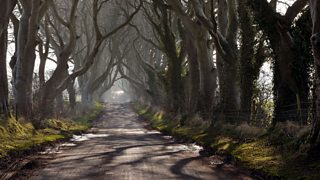
Trees really do have a preference for sharing with kin.
Describing what trees sound like
In The Susurrations of Trees, we collected all sorts of these personalised descriptions. The sound of aspens, we were told, was like the ‘fizzing of carbonated water in a freshly opened bottle’; that of poplars like ‘the running of a young mountain stream’ or alternatively like ‘the marching of feet in the tree tops’. Oaks were ‘papery’, birches were ‘sibilant’ and pines were almost always described as ‘whispering’.
It was fascinating, too, to collect so many dialect words for tree sounds, words such as ‘brustling’, ‘soughing’, ‘sweeing’, and from the New Forest, the delightful word ‘hooi’.
And then, there were the more technical terms, ‘psithurism’ and, of course, ‘susurration’, which actually sounds like the rustling of a soft breeze in the branches.
What are the meanings behind trees?
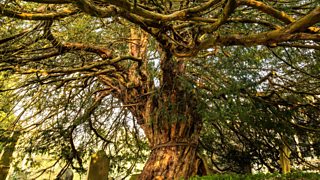
Trees inspire awe and a sense of the spiritual. What is it about them that makes trees so important to us?
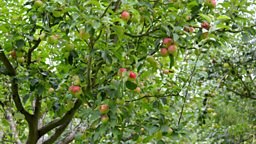
Ultimately, however, our intention with The Susurrations of Trees was not to provide a literary companion to tree sounds, nor even a practical manual to recognising them.
It was to encourage you to go out and experience it for yourself; to listen to the trees around you, in city as much as in countryside, to examine your own responses, to form your own descriptions and, more than anything else, to enjoy them.
How much difference does planting a tree make?
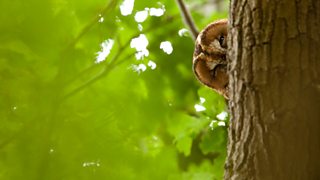
There is a surge in nations encouraging mass tree planting and reforestation. Does it make a difference?
More from Radio 4
-
![]()
The Susurrations of Trees
Susurrations, the songs trees sing in the wind and how writers and musicians capture these.
-
![]()
Natural Histories: Yew
Brett Westwood explores our relationship with the 'churchyard tree', the yew.
-
![]()
Nine winter-y words to warm the cockles
Here are some underused, wintery words to get you in the mood for hibernation…
-
![]()
Seven ways to deal with winter
From moisturising to keeping hydrated, some simple steps to combat winter blues.
